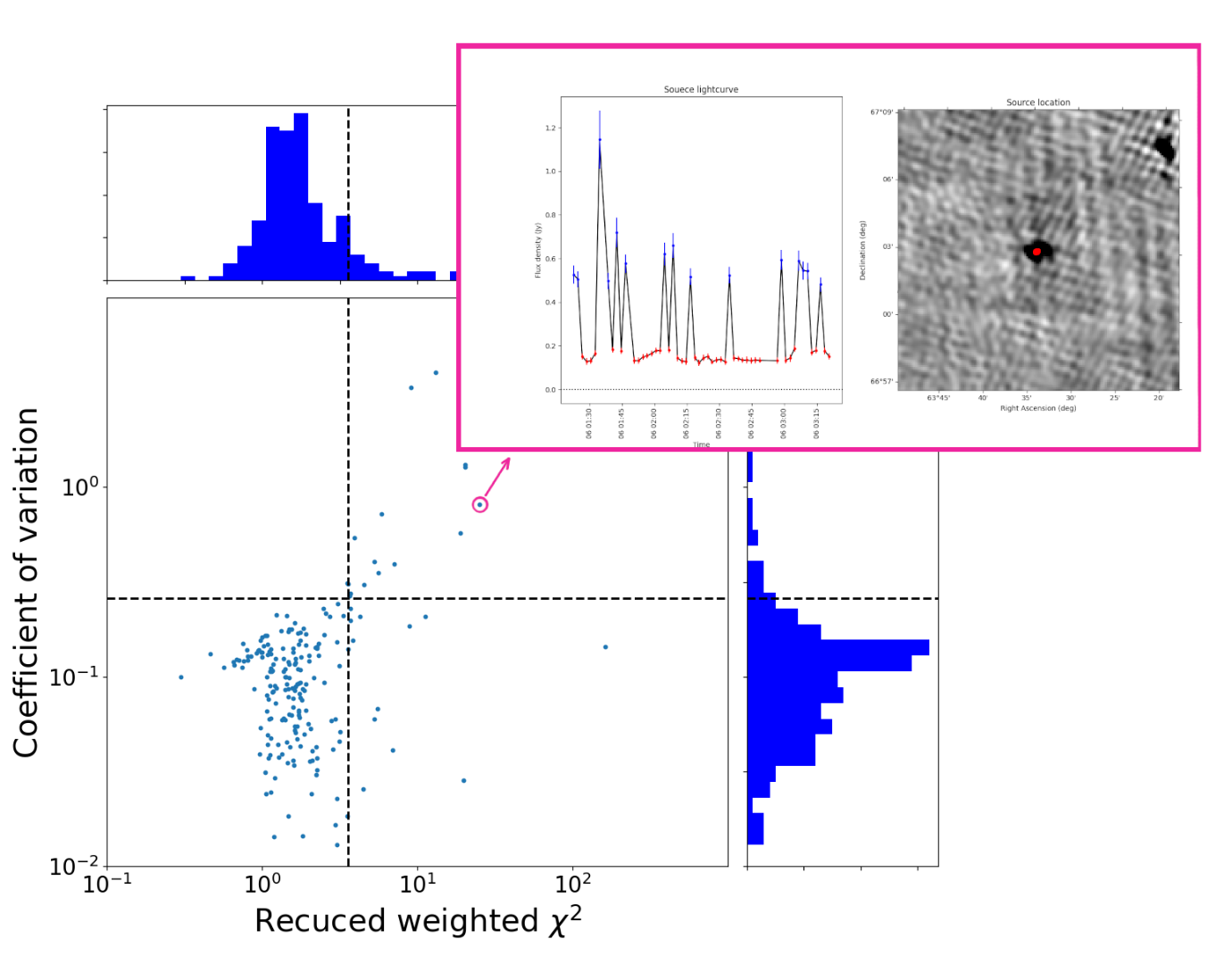Daily Image
03-07-2025Towards an automated search for variable sources
| Submitter: | Timo Millenaar |
| Description: | Timo Millenaar & Antonia Rowlinson The search for transient or otherwise variable sources over long time scales (seconds to years) requires the scouring of many astronomical images. This is what the original transients pipeline [1] does. It finds sources in images and relates them to sources found in previous images, in order to create lightcurves and detect new sources. This approach is described in the TraP paper [2]. Since this methodology has yielded useful scientific results, it is being scaled up. The aim is to apply this methodology to the majority of the LOFAR 2.0 programs (constrained by embargoed data and consensus). Freshly observed LOFAR 2.0 data will then be processed by the transients pipeline, continuously building out lightcurves and looking for new sources. This requires the reworking of the original software package, in order to keep up with the large amounts of data we expect to process. Version 1.0.0 of this new software [3] has recently been released, which means researchers can now deploy this on their own machines to process the data quicker and at a larger scale. Next efforts will make the new version more feature complete and even faster. The biggest challenge though, will now be to integrate the software into the SDC such that it runs automatically on all suitable data. In the image at the top a visualization is shown that is based on the database created by the new version of TraP. For each source two metrics are calculated that are a measure of flux variability over time of a single source. These two metrics are visualized in a scatter plot where we are mostly interested in sources that are highly variable on both metrics, i.e. the upper right corner. The lightcurve and the location of the source (in the most recent image) are shown for one of the variable sources. 1. Gijs J. Molenaar, John D. Swinbank. Transients pipeline. 2012. URL: https://github.com/transientskp/tkp/tree/master 2. John D. Swinbank et al. “The LOFAR Transients Pipeline”. In: Astronomy and Computing 11 (2015), pp. 25–48. issn: 2213-1337. doi: https://doi.org/10.1016/j.ascom.2015.03.002. url: https://www.sciencedirect.com/science/article/pii/S2213133715000207. 3. Timo Millenaar. Transients pipeline. 2025. URL: https://git.astron.nl/RD/trap |
| Copyright: | Apache 2.0 |
| Tweet |  |
